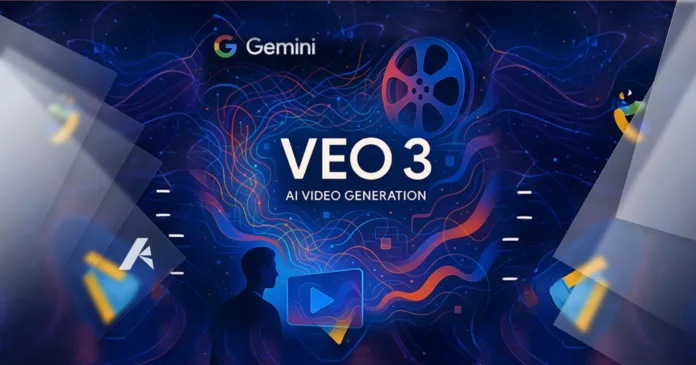Table of Contents
What Veo 3 Brings to Google Photos
Squaredtech, we closely follow how artificial intelligence is reshaping everyday tools. Google’s integration of its Veo 3 video-generation model into Google Photos marks a significant leap in AI-assisted creativity for users. This update does more than simply improve a feature or add an option. It transforms how people interact with photos and videos, giving them the ability to animate, remix, and reimagine their image libraries in ways that were not previously possible.
The headline feature is that Veo 3 enables Google Photos users to transform still images into videos with much higher quality than before. While photo-to-video conversion has been part of Google Photos in the past, the results were often basic. With Veo 3, users now have access to more natural animations, sharper resolution, and smoother transitions that make these clips appear professionally produced.
Read More About Our Article of TikTok Users Pretend to Be Veo 3 AI Creations in New Viral Trend Published on June 3rd, 2025 SquaredTech
Google states that the model can enhance still images into “higher-quality clips,” which means people can expect realistic depth, improved textures, and movement effects that breathe life into static shots. For families, this means old photos can be turned into vivid keepsakes. For creators, it means adding motion to content that can be shared directly to social platforms.
This enhancement alone would have been a strong update, but Veo 3 integration goes much further. It includes an entire set of creative tools inside a new Create tab, making Google Photos feel more like an editing suite than a simple storage platform.
Creative AI Tools: From Remix to Collage
The Veo 3 integration introduces several new tools designed to give users flexibility over how their images and videos are presented. We have break down each function below:
- Remix Tool: This feature allows users to transform ordinary photos into different artistic styles. Options include anime-inspired drawings, comic book illustrations, and 3D animations. This mirrors the popular demand for AI image generators, which have often been used to produce Studio Ghibli-style portraits or cartoon renderings of real-life people. Now, Google Photos brings that capability natively inside its app.
- Collage Tool: The collage function simplifies the process of selecting multiple photos and arranging them in a chosen layout. While collages have been part of Google Photos before, Veo 3 adds a creative spin by letting users access a built-in editor directly from the collage maker. This means you can fine-tune images, adjust their placement, and add personalized touches without leaving the workflow.
- Highlight Tool: Another standout is the Highlight tool, which creates video montages automatically. Users can input prompts, and the AI assembles sequences of images and clips into a polished visual story, complete with music. This is especially useful for events like birthdays, weddings, or vacations where people want quick but professional-looking summaries of their memories.
- Cinematic Photos: With this feature, Google Photos turns existing 2D photos into 3D-like renderings. By simulating depth, it gives flat pictures the illusion of movement and perspective. When paired with animations or music, these Cinematic Photos become striking visuals for sharing online or displaying on digital frames.
Together, these tools represent a shift from Google Photos being a passive archive of images to an active creative platform powered by artificial intelligence.
Combining AI Tools for Unique Results
A major strength of the Veo 3 update is that the tools do not exist in isolation. Users can combine them for more complex outputs. For instance, a still image can first be transformed into a Cinematic Photo, then included in a Highlight montage, and finally remixed into a stylized 3D animation.
This layering of effects gives users professional-grade flexibility without requiring advanced editing skills. What once took multiple apps or professional software can now be done inside a single Google Photos workflow.
we see this as a strategic move from Google. By integrating multiple AI-driven tools into one familiar app, Google keeps users within its ecosystem and reduces the need for third-party editing platforms.
Availability and Subscription Options
Google Photos with Veo 3 integration is available now for users in the United States. The features are located under the Create tab, which acts as a central hub for all the new tools.
However, there is a catch. Google is limiting how many AI-generated images or videos a user can produce daily. Standard accounts receive only a small number of generations. For heavier usage, customers must upgrade to Google AI Pro or Google AI Ultra subscriptions. These tiers offer expanded generation limits and additional editing features.
This subscription model reflects a broader trend across tech platforms. Companies offer AI-powered features for free at a limited level but require subscriptions for unlimited or advanced use. For Google, it positions Veo 3 as both a creative service and a revenue driver.
Broader Context: Google’s AI Expansion
The integration of Veo 3 into Google Photos is not an isolated move. Recently, Google has introduced Veo 3 to YouTube, allowing creators to experiment with AI-driven video generation. By rolling it out to Photos, Google is signaling its intent to make Veo 3 a core part of its ecosystem, accessible to both casual users and professionals.
We have noted that this aligns with Google’s strategy of embedding AI into its most widely used platforms. Instead of launching standalone AI apps, Google is building features directly into products people already rely on daily. This ensures quick adoption and creates a competitive edge against platforms like Apple Photos and Adobe Creative Cloud.
Squaredtech’s Final Analysis
The Veo 3 integration makes Google Photos a more powerful tool for everyday users. What was once an app for storing and lightly editing images now becomes a platform for animation, remixing, collage creation, and cinematic storytelling.
For casual users, this means memories can be transformed into visually engaging formats with little effort. For creators, it offers fast ways to produce content for social platforms without relying on third-party apps.
However, limitations exist. The daily cap on generations can frustrate users who want more freedom, and the subscription tiers may feel restrictive for those who prefer free services. Still, for many, the ability to animate still photos, remix them into artistic styles, and generate highlight reels will justify the added cost.
Squaredtech believes the most important aspect is accessibility. By making Veo 3 tools part of the Google Photos interface, Google lowers the barrier to AI creativity. People who may never have experimented with AI art or video generation now have the tools at their fingertips.
Final Word:
Google Photos with Veo 3 integration reshapes how users interact with photos. From animating still images to creating 3D cinematic renderings, the update demonstrates Google’s push to bring AI into everyday creativity. The combination of accessibility, creativity, and subscription-driven expansion makes this a landmark step for Google Photos and a clear example of AI moving from novelty into mainstream use.
Stay Updated: Artificial Intelligence


